#10. Another stout par 4 to start the inward 9.


From the tee:

What lurks if you miss right. This is far off line, but acts as a little bit of a safety bunker:
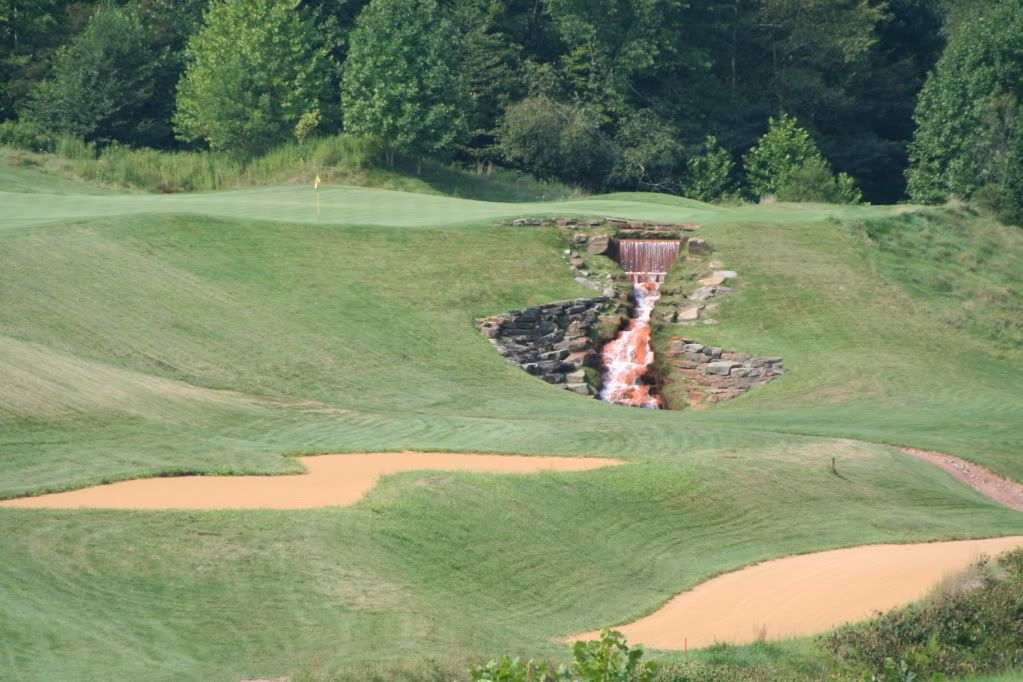
A view from the right side (a bit closer). This appears to be after the path crossing, so likely inside of 100 yards.

From the left side, well back in the fairway:

The next few shots will give you just a little appreciation of the contours on this green:
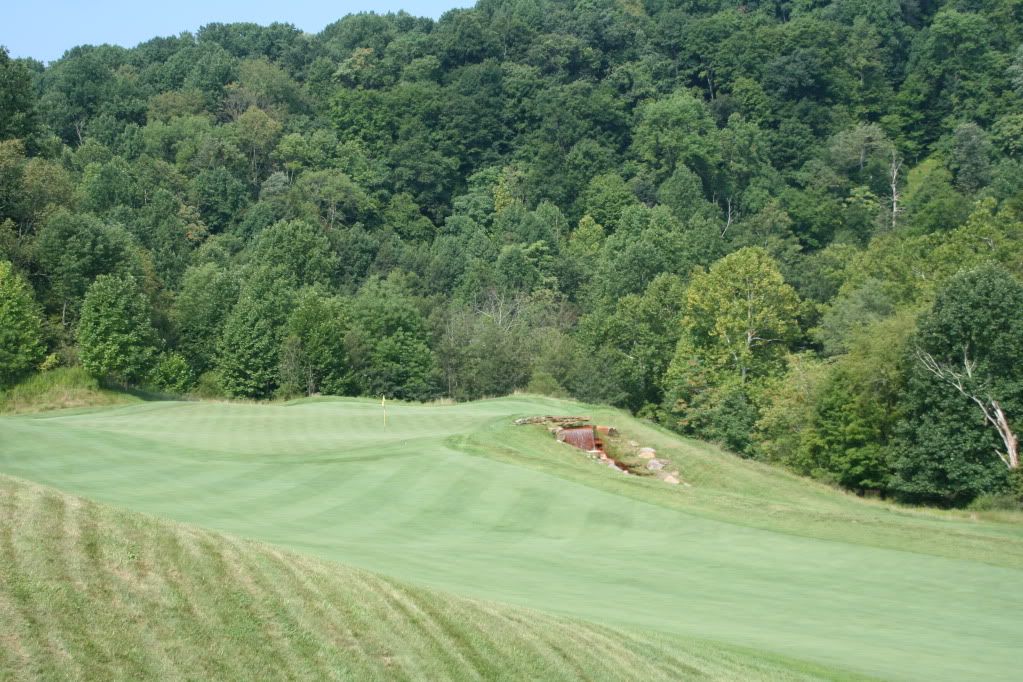

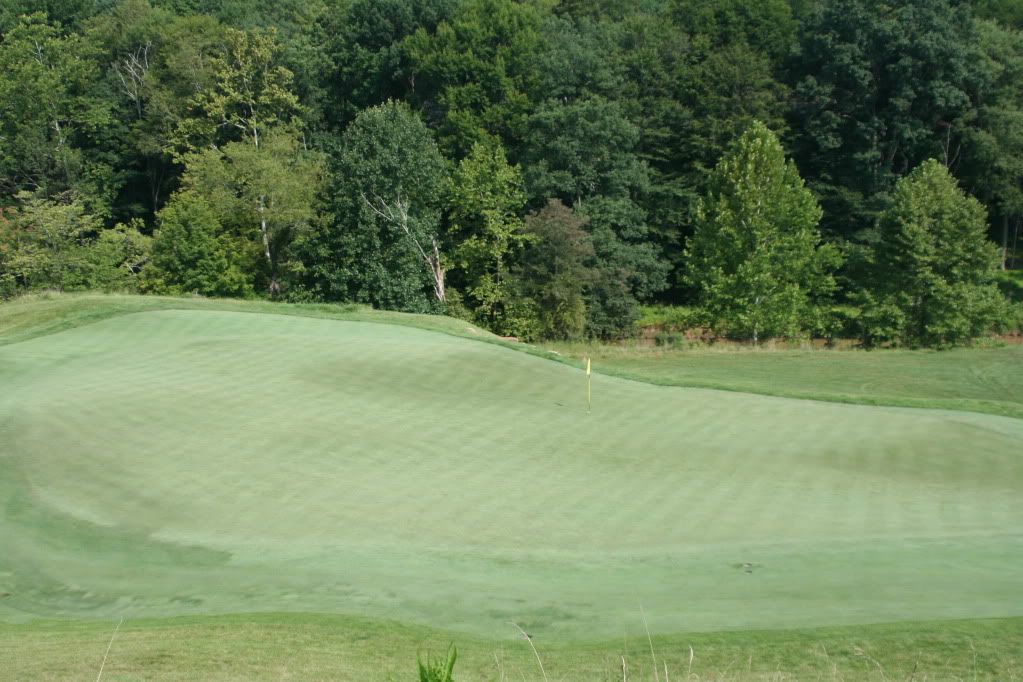
Looking back from just left of the green.
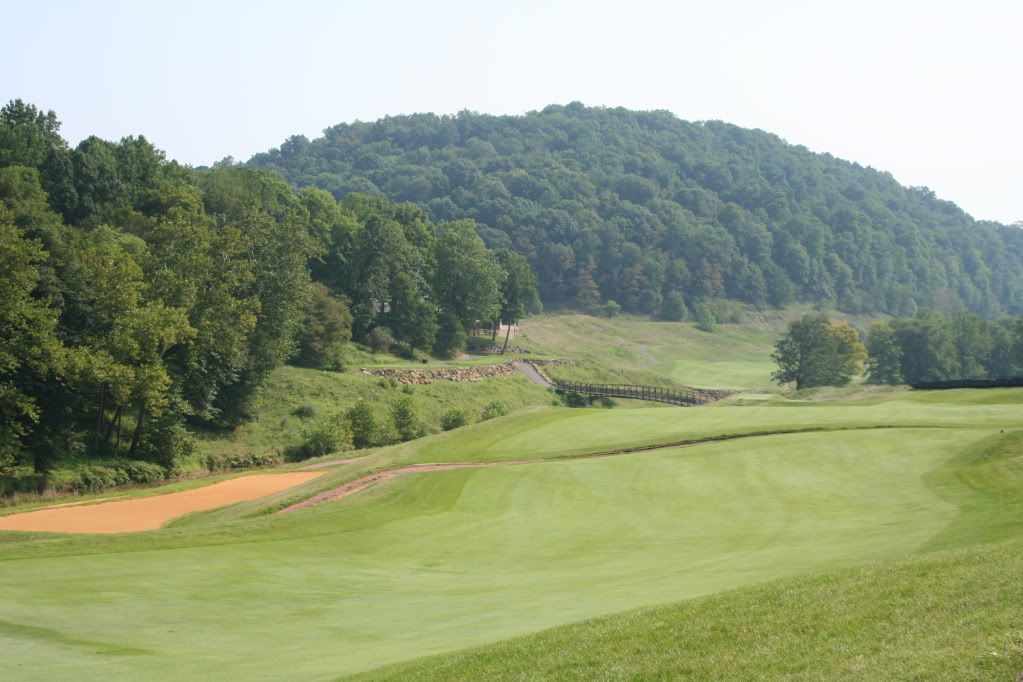
A few final pics of this one from the 18th. The 18th / 10th vista is another of the many gorgeous views around PDGC:
This first pic taken from near the 18th green.

A little before the 18th green (what a preview!):
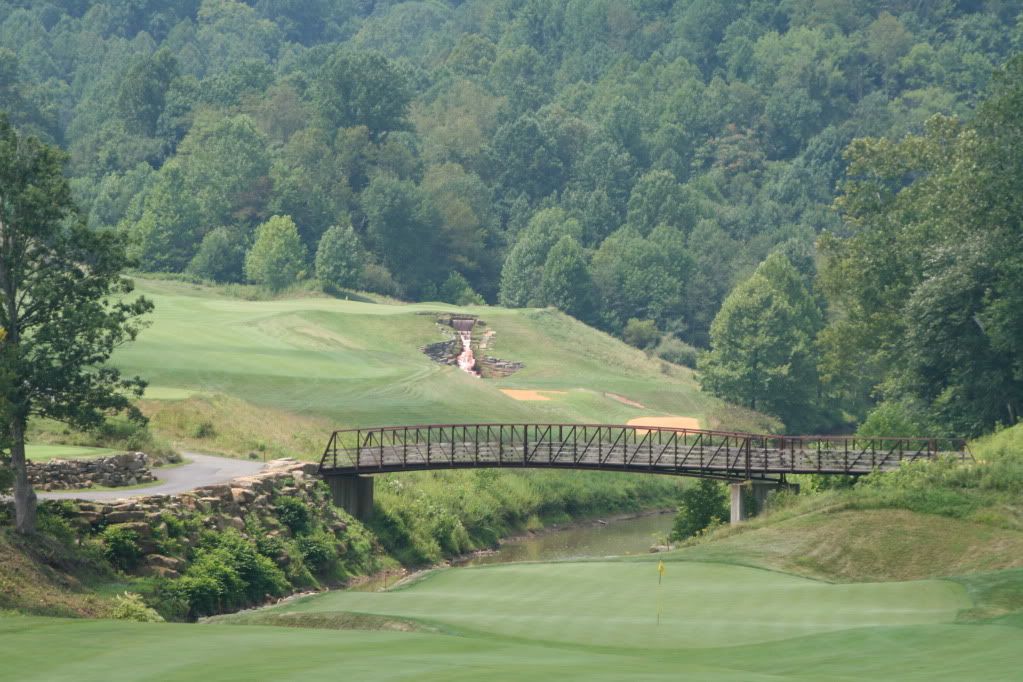
**********************
Line of Instinct alert!! From what I recall - when you stand on the tee and feel like you've picked your line, aim 15 yards left of that.
After Dye spent the entire front concealing the landing areas from the tee and making them appear narrower than they really are, I sense he was setting you up for this tee shot. The green, the bunkers, and the supposedly concealed shortcut route all pull your vision to the right. But from what I see from the aerial / yardage book, the entire realistic landing area is right there in front of you (and well to the left).
I suppose this may change if you move up a few decks or are a bigger hitter, but I see no reason to flirt with the inside of this dogleg for the average player. Is there a prevailing wind to consider off the tee? Hopefully Charlie will correct me if I'm missing something.
Once you find the fairway, you have a huge target to aim for (albeit very segmented). I recall my recovery shots ringing around the contours, and having a few backstop options (with balls running past the hole, and then falling back). This is one of those that I label a "Six-Pack Green" (i.e. the type that you & your buddies go to after the round with a few beers and have putting / chipping contests).
A few items for discussion:
- Is there any low running play off the mounds short left of the green? Given the length of this hole, I imagine many are in need of a non-aerial approach.
- How much does the ideal approach angle change as the pin positions shift? The severe contours look like they will always be a consideration.
- What's the general impression of the waterfall? Tom Doak referred to it as an "unfortunate tacky" feature on a previous thread. But I recall reading somewhere that this is the result of a natural spring running under the green, rather than a purely artificial feature (i.e. requiring the recycling / pumping of water). I found it to be an interesting change of pace that blended in with the mined look of the land, but was curious what others thought.